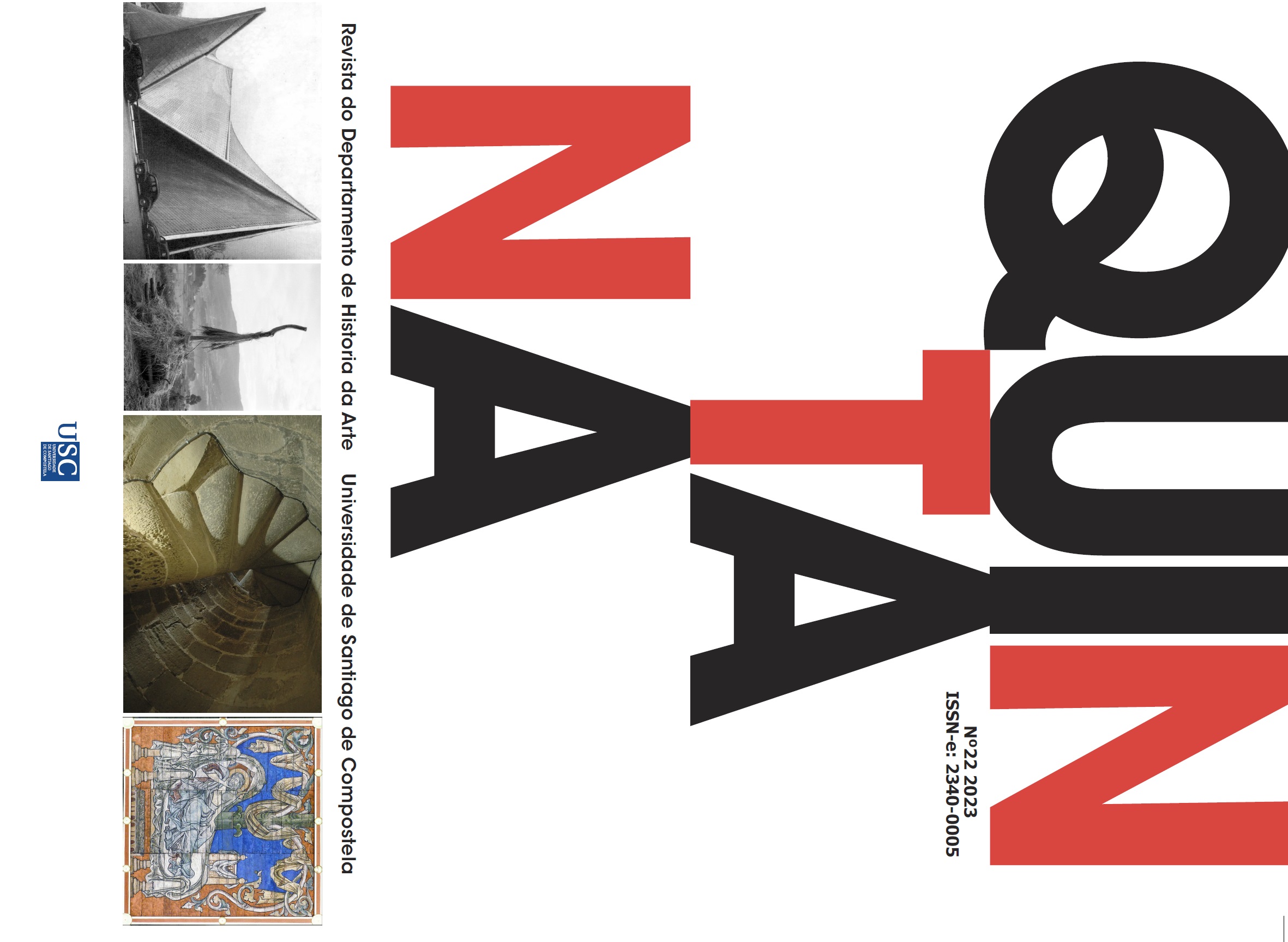THE ATLAS AS A SCIENCE OF IMAGES: ART HISTORY AND CULTURAL HISTORY IN GERHARD RICHTER AND ABY WARBURG
Main Article Content
Abstract
While acknowledging their historical and thematic differences, this article seeks to draw parallels between Gerhard Richter’s Atlas (1962–2013) and Aby Warburg’s Mnemosyne Atlas (1924–29). The article commences by exploring the broader relationship between archives, memory, and images, subsequently delving into the analysis of three key aspects: the concept of montage-knowledge as the basis for constructing a history without text; the significance of auto(biographical) and fictional components in the projects of both authors; and the central role played by the processes of inscription, transformation and survival of images in shaping cultural memory. Here, cultural memory is comprehended as a conglomeration of knowledge and objects, serving as an ethical-scientific framework for constructing and symbolically interpreting historical knowledge. By shedding light on the comparative potential between Richter and Warburg, a topic scarcely covered in existing specialized literature (aside from sporadic references in Buchloh's 1999 text on the anomic archive), the article aims to contribute to an epistemological revaluation of some of the most relevant meanings, valences and concepts permeating the atlases of these two influential German “historian-artists”.
Keywords:
Article Details
References
Agamben, Giorgio. “Notas sobre o gesto”. Interactividades, Artes Tecnologias Saberes, coord. Maria Teresa Cruz (1997): 16-21.
Angel, Sara. “The Mnemosyne Atlas and the Meaning of Panel 79 in Aby Warburg's Oeuvre as a Distributed Object”. Leonardo 44 no. 3 (June 2011): 266-267. https://doi.org/10.1162/LEON_a_00169
Bing, Gertrud. “A. M. Warburg”. Journal of the Warburg and Courtauld Institutes 28 (1965): 299-313. https://doi.org/10.2307/750675
Borchardt-Hume, Achim. “’Dreh Dich Nicht Um’: Don’t Turn Around. Richter’s Paintings of the Late 1980s”. In Panorama: New Perspectives on Richter, edited by Mark Godfrey, 163-175. London: Tate Publishing, 2011.
Buchloh, Benjamin. “Gerhard Richter's 'Atlas': The Anomic Archive”. October 88 (Spring 1999): 117-145. https://doi.org/10.2307/779227
Buchloh, Benjamin. “Amnesia and Anamnesis”. In Gerhard Richter’s Birkenau Paintings, edited by Benjamin Buchloh, 5-34. Cologne: Walther Konig Verlag, 2016.
De Laude, Silvia. “Aby Warburg, Die römische Antike in der Werkstatt Ghirlandaios. Traccia della conferenza alla Biblioteca Hertziana di Roma (19 gennaio 1929), con una Nota al testo (e 'agenda warburghiana')”. Engramma 119 (Set. 2014). http://www.engramma.it/eOS/index.php?id_articolo=1624
Didi-Huberman, Georges. Devant le temps. Paris: Les Éditions de Minuit, 2000.
Didi-Huberman, Georges. L'image survivante: Histoire de L'art et temps des fantômes selon Aby Warburg. Paris: Les Éditions de Minuit, 2002.
Didi-Huberman, Georges. “Knowledge: Movement (The Man Who Spoke to Butterflies)”. In Michaud, Philippe-Alain. Aby Warburg and The Image in Motion. New York: Zone Books, 2007.
Didi-Huberman, Georges. “Die Malerei in ihrem aporetischen Moment”. In Gerhard Richter: Birkenau, edited by Helmut Friedel, 31.55. Exh. cat. Cologne: Museum Frieder Burda, 2016.
Duarte, Miguel Mesquita. “(Dis)Figuration of Memory In, Around, and Beyond Gerhard Richter's Atlas: Between Photography, Abstraction, and the Mnemonic Construction”. RIHA Journal 0200 (2018). https://doi.org/10.11588/riha.2018.0.70280
Guerreiro, António. “Aby Warburg e a História como Memória”. Revista de História das Ideias 23 (2002): 389-407.
Haidu, Peter. “The Dialectics of Unspeakability: Language, Silence, and the Narratives of Desubjectification”. In Probing the Limits of Representation, edited by Saul Friedlander, 277-299. Cambridge, Massachusetts, London: Harvard University Press, 1992.
Jaskot, Paul B. The Nazi Perpetrator: Postwar German Art and the Politics of the Right, Minneapolis and London: University of Minnesota Press, 2012. https://doi.org/10.5749/minnesota/9780816678242.001.0001
Johnson, Christopher D. Memory, Metaphor and Aby Warburg’s Atlas of Images. Ithaca, NY: Cornell University Press, 2012. https://doi.org/10.7591/cornell/9780801477423.001.0001
Michaud, Philippe-Alain. Aby Warburg and The Image in Motion. New York: Zone Books, 2004.
Negri, Antonio. “On Gilles Deleuze & Félix Guattari, A Thousand Plateaus”. Graduate Faculty Philosophy Journal 18, no.1 (1995): 93-109. https://doi.org/10.5840/gfpj19951812
Querini, Gino. “On the political use of images. Some reflections on the last panels of Aby Warburg's Mnemosyne Atlas”. Studies in Visual Arts and Communication: an international journal 2, no. 2 (2015): 1-25 on-line. http://journalonarts.org/wp-content/uploads/2016/07/SVACij_Vol2_No2-2015-Querini-Warburg_Mnemosyne_Atlas.pdf.
Rampley, Matthew. “Archives of Memory: Walter Benjamin's Arcades Project and Aby Warburg's Mnemosyne Atlas”. In The Optic of Walter Benjamin, edited by Alex Coles, 94-117. London: Black Dog Publishing, 1999.
Rancière, Jacques. La Fable cinématographique. Paris: Éditions du Seuil, 2001.
Richter, Gerhard. Atlas, ed. Helmut Friedel. New York: D.A.P./Distributed Art Publishers, 2007.
Richter, Gerhard. Interview conducted by Julia Voss and Peter Geimer, Frankfurter Allgemeine Zeitung (25/02/2016). http://www.faz.net/aktuell/feuilleton/kunst/gerhard-richter-im-interview-ueber-gemaeldezyklus-birkenau-14088410.html
Ricoeur, Paul. La Mémoire, L’Histoire, L’Oubli. Paris: Seuil, 2000.
Rothberg, Michael. “Multidirectional memory”. Témoigner. Entre histoire et mémoire 119 (2014). https://doi.org/10.4000/temoigner.1494
Sayad, Cecilia. Performing Authorship: Self-Inscription and Corporeality in the Cinema. London: Bloomsburry, 2013. https://doi.org/10.5040/9780755693399
Samain, Etienne. “As 'Mnemosyne(s)' de Aby Warburg: Entre Antropologia, Imagens e Arte”, Revista Poiésis 17 (2011): 29-51. https://doi.org/10.7476/9788526814738.0005
Schoell-Glass, Charlotte. “’Serious issues’: The Last Plates of Warburg's Picture Atlas Mnemosyne”. In Art History as Cultural History. Warburg’s Projects, edited by Richard Woodfield, 183-208. London and New York: Routledge, 2001.
Warburg, Aby. “The absorption of expressive values of the past”, translated by Matthew Rampley. Art in Translation 1 no. 2 (2009): 273–283. https://doi.org/10.2752/175613109X462708
Warburg, Aby. Atlas Mnemosyne, trad. Joaquín Chamorro Mielke; colab. Claudia Brink. Madrid: Akal, 2010.
Warburg, Aby. O Nascimento de Vénus e a Primavera de Sandro Botticelli. Lisboa: KKYM, 2012.
Warburg, Aby. “Die römische Antike in der Werkstatt Ghirlandaios”. Engramma 119 (Set. 2014). URL: http://www.engramma.it/eOS/index.php?id_articolo=1624
Warburg, Aby, e Gertrud Bing. Diario romano, ed. Mauricio Ghelardi. Madrid: Ediciones Siruela, 2016.
Wind, Edgar. “Warburg's Concept of Kulturwissenschaft and its Meaning for Aesthetics”. In The Eloquence of Symbols, edited by Jaynie Anderson, 21-35. Oxford: Clarendon Press, 1993.
Vitto, Cindy L. “The Virtuous Pagan in Middle English Literature”. Transactions of the American Philosophical Society 79, no. 5 (1989): 1-100. https://doi.org/10.2307/1006545
Most read articles by the same author(s)
- Bruno Marques, Miguel Mesquita Duarte, Gender and dismantled voyeurism: Who is watching whom in the experimental cinema of Andy Warhol, Yoko Ono and Julião Sarmento? , Quintana: revista do Departamento de Historia da Arte: No 15 (2016)







